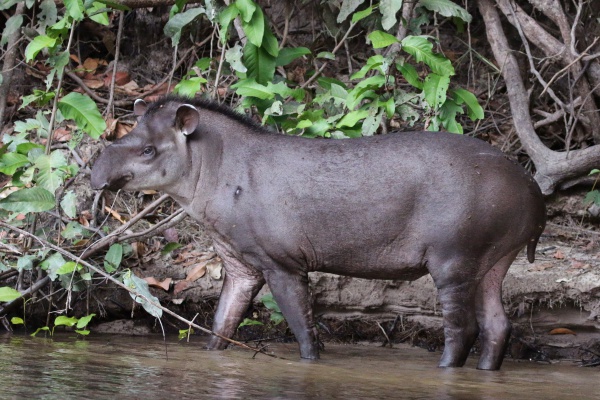Facts About Tapir
A tapir is a captivating, large herbivore that somewhat resembles a pig but possesses a short, flexible trunk-like nose. These creatures inhabit the jungles and forests of South America, Central America, and Southeast Asia. There are four main species of tapirs: the Brazilian tapir, Malayan tapir, Baird's tapir, and mountain tapir. A fifth species, the kabomani tapir, is also recognized, though its classification remains a subject of scientific debate. Unfortunately, tapirs are considered either Endangered or Vulnerable by the IUCN Red List.
Tapirs exhibit a unique and varied appearance. They come in different sizes and colors, characterized by oval-shaped ears with white tips, splayed hooved toes, and a flexible nose that assists in feeding. Primarily nocturnal and crepuscular, tapirs possess monocular vision, allowing each eye to see independently. They have a straightforward digestive system and are hindgut fermenters. Tapirs reach sexual maturity between the ages of three to five years and have a lengthy gestation period of approximately 13 months, typically giving birth to one calf at a time.
While tapirs prefer dryland forests, they also enjoy spending time in water to forage and cool off. Their diet primarily consists of fruits, berries, and leaves. Tapirs face threats from predators such as jaguars, crocodiles, and tigers, in addition to human activities like habitat destruction and hunting for their meat and hides. Conservation efforts are underway to protect these remarkable animals and their habitats.
Tapirs have ancient origins, with ancestors dating back to the early Eocene epoch. They possess diverse genetics, with different species exhibiting varying numbers of chromosomes. However, a lack of genetic diversity poses a significant threat to their survival. Although tapirs are generally peaceful, there have been rare instances of them attacking humans when they feel threatened.
In culture and folklore, tapirs are often highlighted for their distinct appearance. They have been featured in various media, including films and video games. Remarkably, the tapir also serves as a symbol in certain contexts, such as critiques of references to horses in the Book of Mormon.

 Venezuela
Venezuela